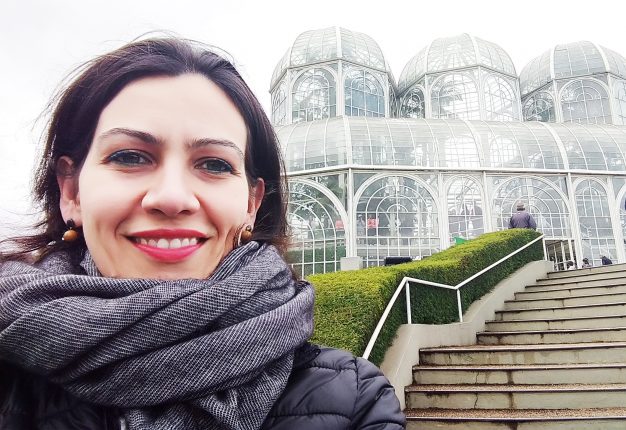
Implementing child-friendly policies in Latin American cities
Irene Quintáns is a force to be reckoned with. She is on a crusade helping cities across Latin America implement child-friendly policies. Aside from her passion, a key part of her success is her ability to collaborate and multitask.
Irene is the founder and director of OCARA Network, a Latin American network for the exchange of experiences and projects on city, art, architecture, mobility and urban space with children. She is also a consultant responsible for developing Bernard van Leer Foundation’s Urban95 strategy in Latin America and a member of the Scientific Program Committee for the Child in the City Foundation. She’s also part of the Programme Committee for this year’s 9th edition of the Child in the City World Conference.
In this interview, Irene sheds light on the lessons she’s learnt along the way and unpacks some of the urban challenges in Latin American cities.
Can you tell us a bit about creating and developing the Safe Routes to School Project?
The Paraisópolis Safe Routes to School project was developed in the second largest favela in Sao Paulo (Brazil) and the pilot programme was aimed at the 7,500 students registered in elementary schools. It was integrated with the work that the municipality undertook to improve the quality of life in poor areas. The ‘São Paulo Slum Upgrading Programme of the Municipal Housing Secretariat’ was awarded the United Nations Scroll of Honour in 2012.
Among its principal lines of action were planned safe communal spaces along the routes taken by schoolchildren, improving the civil infrastructure and traffic of the routes and developing new educational experiences relating to the maintenance of the public spaces (both in the classroom and in school environments). This was my very first opportunity to work on children´s mobility in deprived areas, and it proved to be a great and enriching challenge.

What insights did you gain from working for the Barcelona City Council (in regard to urban planning and issues concerning children)?
In Barcelona, I worked for the public-private partnership ProEixample, which was intended to enhance urban quality in the city´s most central neighbourhoods. I was involved in one of its main projects, whose strategic goal was recovering urban spaces of the consolidated city so that all residents can have a green space within 200 metres, incorporating the interiors of urban blocks to win new spaces of public use and leisure areas. I learned that it is possible to find new urban regulations that allow mixing public and residential spaces, and that public-private partnerships can be a good approach if needed. These nearby new leisure areas are perfect for children as they give playful and healthy opportunities, not only through their playgrounds but also by walking to them.

Can you tell us a bit about your work with the Bernard van Leer Foundation`s Urban95 strategy in Latin-America?
Urban95 is the Bernard van Leer Foundation’s 30-million-euro initiative to make lasting change in the landscapes and opportunities that shape the crucial first five years of children’s lives. Urban95 is rooted in the belief that when urban neighbourhoods work well for pregnant women, babies, toddlers and young children, they also tend to nurture strong communities and economic development.
My role as an external consultant is to provide technical assistance to Latin America Cities developing Urban95 pilots (Brazil, Peru and Colombia). Some of the strategies currently tested by cities can be found in the Urban95 Stater Kit publication.
This year, between March and June 2018, I joined the Executive Leadership Program on Early Childhood Development in Harvard University, coordinating the developing of an Urban Design and Childhood`s Action Plan by a Latin America cities Urban95 working group, granted by Bernard van Leer Foundation, composed of Municipal Secretaries, Technicians and Councillors.
Scaling Urban95 urban labs can be an excellent opportunity to develop innovative urban experiences in urban vulnerable areas, focused on the youngest.

Are the urban challenges in Latin-America similar or different to the ones in Europe? Or does it vary country by country?
Urban and social projects are needed in both Europe and Latin America, primarily in relation to the issue of children in the city, in order to enhance their active mobility and safe autonomy, to ensure the offer and use of public spaces and to adopt policies that will favour family reconciliation (work and caregiving), aiming at spending more quality time with one´s kids.
Latin America is a heterogeneous community because of its biodiversity and culture, sharing several features in its structure and historical evolution as well as two major languages (Spanish and Portuguese). Though reaching different degrees of accomplishment, all its countries partake in the urban challenges outlined but face critical issues, nevertheless, when compared to Europe: a great social inequality, which is reflected in the distribution and outline of cities, in the abuse of car to move around and in the poor public transport, along with a shortage of attractive and safe public spaces and, especially, high rates of violence.
The Traffic Snake Game (TSG) was an EU campaign developed to encourage walking and cycling to school. With the support of Marta Román, geographer of Gea21 –TSG’s Spanish National Focal Point, I advised a São Paulo`s municipal school on how this experience should be applied. This was the first time it was being piloted outside Europea and it was done with a group of 30 children.
We decided to tailor TSG rules to the local reality, where infrastructure and road safety is still very complicated: 4 weeks of the game instead of regular 2 and without encouraging bikes. A day before the end of the game, the number of students on foot exceeded for the first time the number of children who used the school transport, ahead of TSG`s expectations!

Irene Quintáns is part of the programme committee for the 9th Child in the City World Conference September 24-26 in Vienna, Austria. Register now for an opportunity to network and exchange ideas with her and other delegates.




